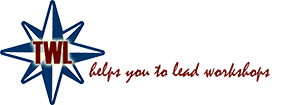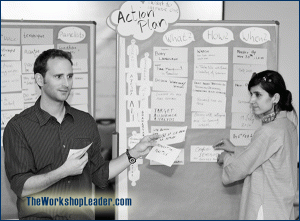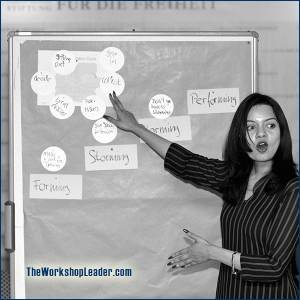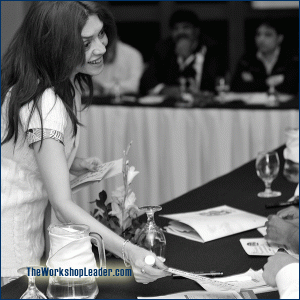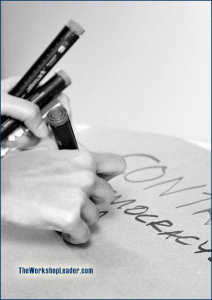Coming together is a beginning. Keeping together is progress. Working together is success.
Henry Ford (1863—1947)
American Industrialist
The Metaplan® or Card Technique is the most useful and flexible way of moderating group input. This is the core of moderation if we understand the steering of communication in groups.
Objectives
It serves to:
- produce ideas,
- collect questions,
- exchange opinion,
- solve problems.
The German Eberhard Schnelle (1921—1997) initiated this technique in 1972. The name refers to the German company Metaplan® based in Quickborn near Hamburg.
The basic concept
Basically, the metaplan or card technique is simple: you have a pin board (with exchangeable paper on the surface) and cards filled out by your participants (in big letters, max. three rows — it works best with just one word). As moderator you have now the chance to play with the participants’ input in manifold ways. What you always should do is to read the content out loudly (perhaps thereby clarify misreading/misunderstandings) and to value the input by thanking or praising them. As soon as the card is taken it no longer matters who gave it, but rather what is written on the card. Now you glue or pin the card on the board. During this process you could do a clustering first of all. Clustering means that you group different input cards according to an overall heading. This analysis structures the ideas into different fields. You can address one field after the other. For example: cards with “voice”, “talking”, “body language” could be clustered under the heading “communication”.
Pinning or glueing
Pinning is better if you want to re-cluster the input. On the other hand, it takes concentration away from the participants and you might hurt yourself. If you want to keep the results, but need empty space, i.e. a fresh paper on your board, it’s slightly annoying to take out all the pins and to glue the card afterwards.
For gluing, either ask a participant to serve as an assistant (people generally will be glad to help) and have them put glue on the back of the cards or make a big spiral of glue on the board paper. Be aware that after a few minutes it will have dried out and if your session is longer you will have to repeat it.
Color Coding
Similar to the use of marker colors it is recommended to follow a certain logic for card colours. Structure and layout by colors give orientation and help participants better to understand the content, when you work with metaplan or card technique at the board. Of course it depends on availability, but you should be able to find the basic colours. A suggested way of organising them is as follows:
- White or yellow: Your content.
- Blue: Participants’ content.
- Green: Structures, paradigms and rules.
- Red: Attention, important hints, problems or follow-up tasks.
Recommendations for metaplan
The classical Metaplan® technique takes some time. If you are pressed you could do speed clustering which takes about one quarter of the time. As soon as participants have written their cards, they pin them themselves on one board simultaneously (otherwise the first ones influence the others).
The group takes a look together with the moderator and search for clustering topics. Supposed you find five topics, then five participants write five cluster headings and pin it on another board, while the others pin all the cards under the relevant heading. Although you don’t deal so intensively with each, you have nonetheless taken all inputs and all participants participated in the process.
Take an assistant from the group
For the metaplan or card technique it’s useful to pick an assistant or better to let volunteer assistant from the group. Not only do get more active by themselves and are obliged to reflect, but they exercise the technique, make their own experiences.
For you as facilitator it has the advantage that you can focus on content and process. Otherwise it can happen that you loose the group and the participants start chatting behind your turned back while you are focused on glueing.
